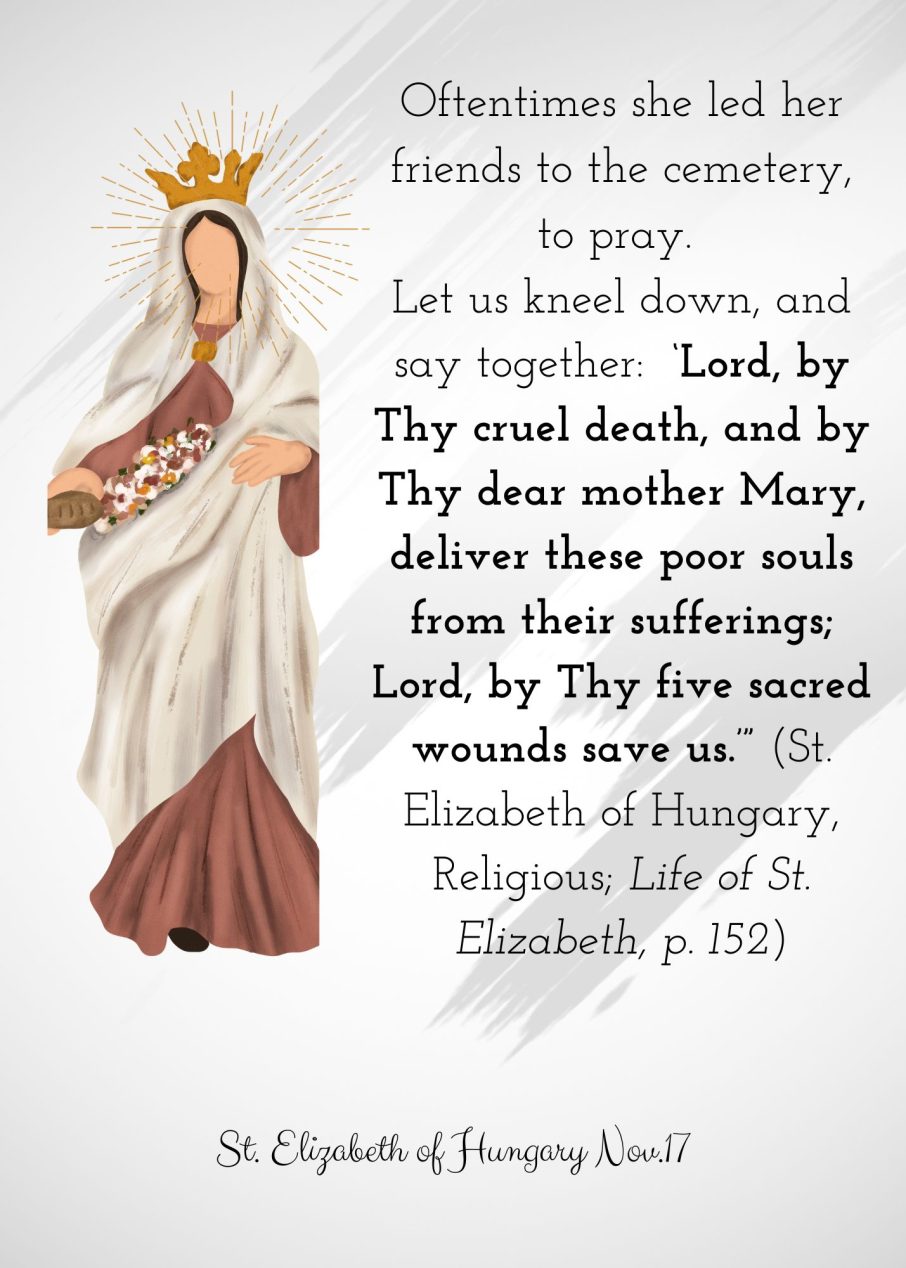You may not know that St.Elizabeth of Hungary had a deep devotion to the Poor Souls in Purgatory.
November is the Month of the Poor Souls and St. Elizabeth of Hungary is a power intercessor.
A daughter of King Andrew II of Hungary, she became the wife of Ludwig, landgrave of Thuringia. It was in her husband’s family that she was persecuted by the nobility for her great love of the poor. Her husband, Ludwig IV, loved her and indulged her in these pious works, often angering his family and others.
However, one day it seemed she took bread without permission from the household. Instead, she saved it from her own meals to give to the poor. The nobleman with Ludwig hoped to catch St. Elizabeth stealing — once and for all proving her deep piety was nothing but a nuisance. Instead, the Lord worked a miracle
The Miracle of the Roses
Ludwig asked Elizabeth to show him what was in her basket as she was walking in the woods. He hoped to clear his devoted wife of any wrongdoing, but there was bread in the basket she had saved from her meals. However, the bread was transformed into roses, to be shown to the group of suspicious noblemen.
That’s why you see St. Elizabeth depicted with roses and bread in most paintings.
St. Elizabeth had a happy marriage but her inlaws hated her. After Ludwig’s death, she was driven from the castle to live in poverty with her children.
St. Elizabeth’s Love of the Poor Souls
Despite her sufferings, St. Elizabeth lived in joy and faith, becoming a Third-Order Franciscan. She used property still belonging to her to build a hospital. She lived in a small mud house and died only at 24 years old in 1231.
Her love of the poor often overshadows her deep love of the Poor Souls in Purgatory.
She often would lead her friends to the cemetery to pray stating:
“Remember that we too shall one day be but dust.” Then, when they had reached the charnel-house, she would say, “Here lie the bones of the dead; these people were once living like us, and are now dead as we shall be; that is why we must love God. Let us kneel down, and say together, ‘Lord, by Thy cruel death, and by Thy dear mother Mary, deliver these poor souls from their sufferings; Lord, by Thy five sacred wounds save us.’” (St. Elizabeth of Hungary, Religious; Life of St. Elizabeth, p 152)
St. Elizabeth’s Legacy
Her legacy of helping the poor, miraculous roses, and deep faith was a powerful witness to those around her, especially her relatives.
St. Elizabeth’s daughter, St. Gertrude of Thuringia, became abbess of a monastery. The example of holiness by St. Elizabeth also led her and her relatives Hedwig of Silesia, Agnes of Bohemia, Margaret of Hungary, Cunigund of Poland, and Elizabeth of Portugal to the religious life.
She is invoked under many titles, being the patron saint of in-law problems; against the death of children; against toothache; bakers; beggars; brides; charitable societies; charitable workers; charities; countesses; exiles; falsely accused people; hoboes; homeless people; hospitals; lacemakers; lace workers; nursing homes; nursing services; people in exile; people ridiculed for their piety; tertiaries; tramps; widows; Sisters of Mercy; Teutonic Knights; diocese of Erfurt, Germany; archdiocese of Jaro, Philippines; Jalžabet, Croatia and Thuringia (in modern Germany.)
St. Elizabeth of Hungary, pray for us!



